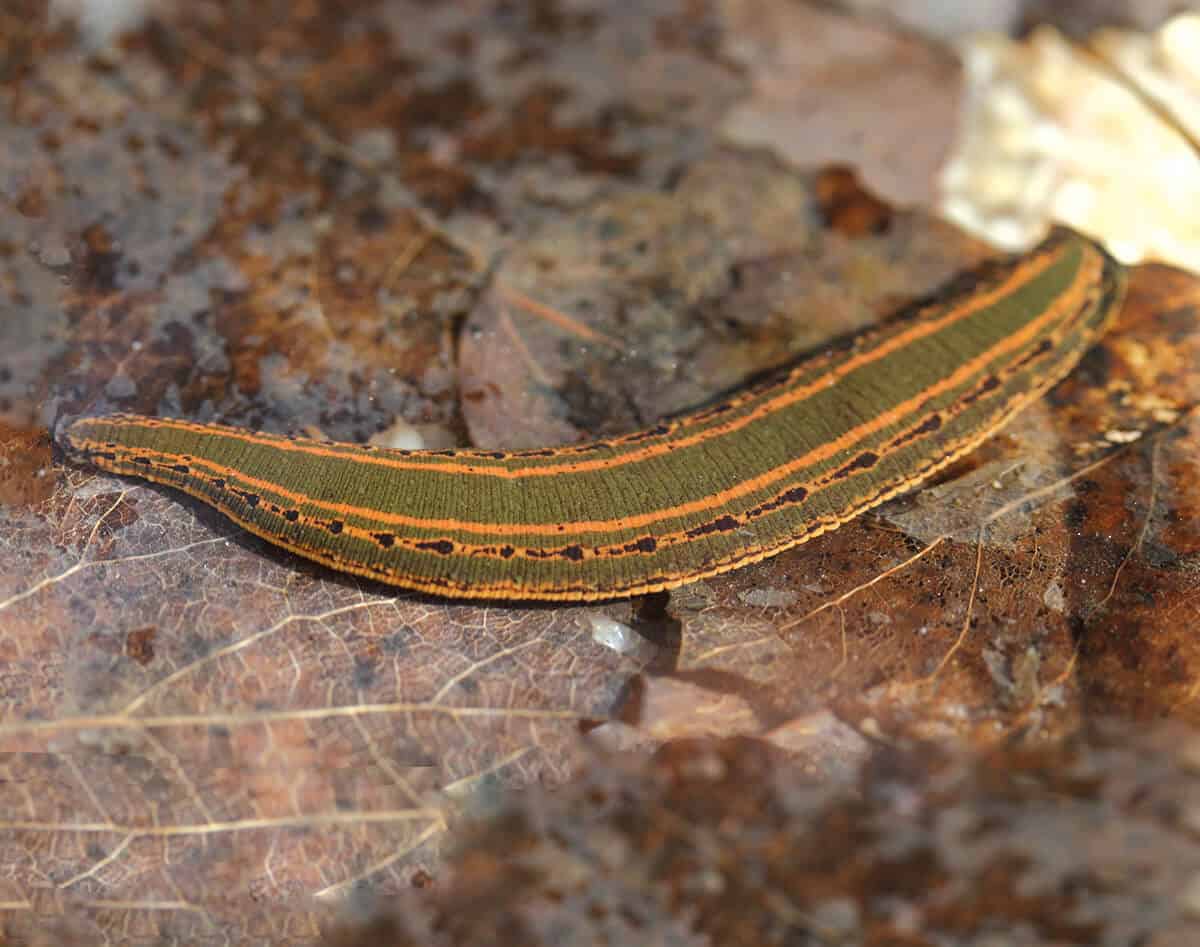Rachel Davies and Craig Macadam run the Freshwater Leech Recording Scheme. To help increase recording of this neglected group, they have just produced a new AIDGAP identification guide to freshwater leeches in Britain and Ireland.
What are leeches?
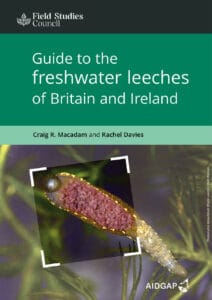
Leeches belong to the phylum Annelida and are closely related to earthworms! Annelids are more commonly known as segmented worms, and if you look closely, you will notice that leeches are indeed segmented.
In the UK we have 17 different species of freshwater leech. Whilst most of them look somewhat different from each other, some species can be hard to tell apart. That’s where the new AIDGAP comes in!
It is hoped that this guide will help to increase the number of leech records in Britain and Ireland. It has come at the perfect time too, as the Freshwater Leech Recording Scheme are in the process of developing a new website to help encourage recording.
The new AIDGAP guide to freshwater leeches
The guide to freshwater leeches covers all 17 species of leech found in Britain and Ireland, and clearly shows which species can be identified in the field, and which species need to be identified using a microscope and key.
It has fantastic colour images, showing the diversity of leeches in the UK, and a clear guide to eye arrangements – which is a key identification feature for taking leeches to family level.
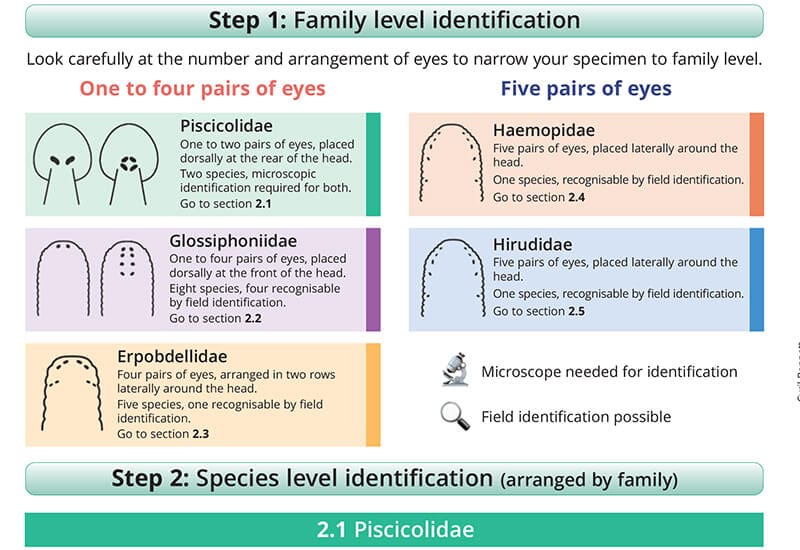
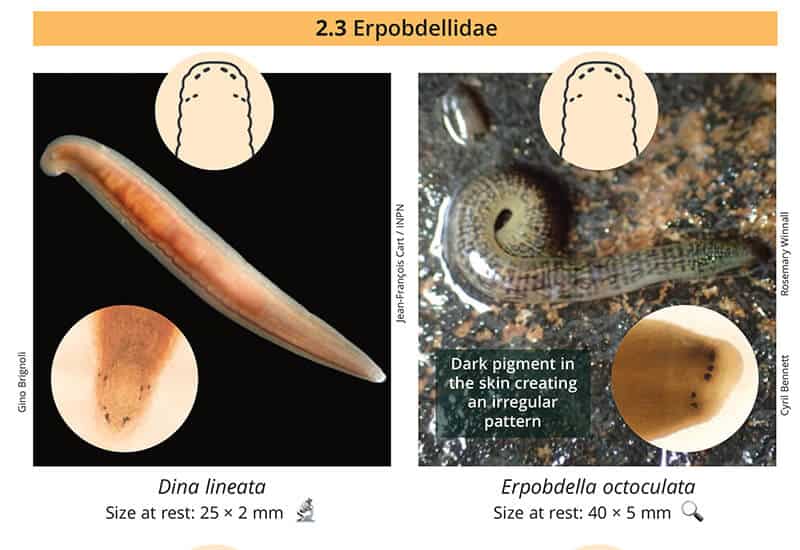
There are between one and five pairs of eyes on the upper surface, with the number and arrangement of eyes important for identifying leech families. Then within each family, photographs and species accounts cover field identification where this is possible.
Visit our online shop to order your copy of AIDGAP Freshwater leeches.
Finding leeches
Leeches live in all types of water bodies, from ditches, streams and rivers to lakes, ponds, canals and wetlands. in general there are fewer species in running waters than in standing waters.
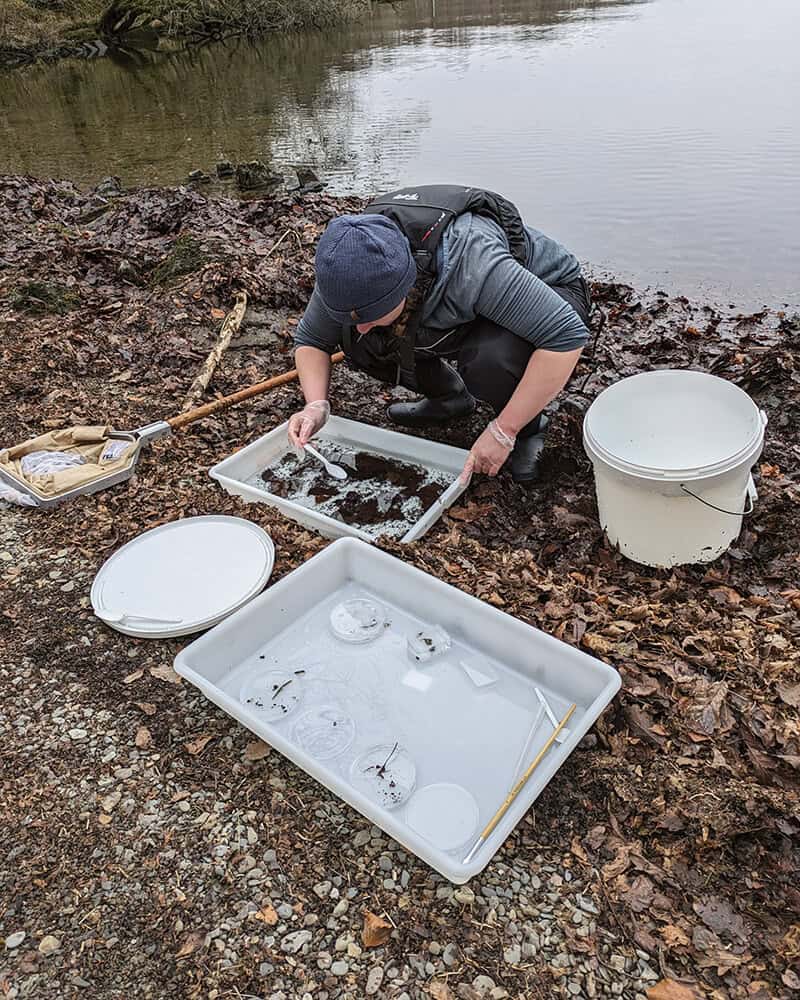
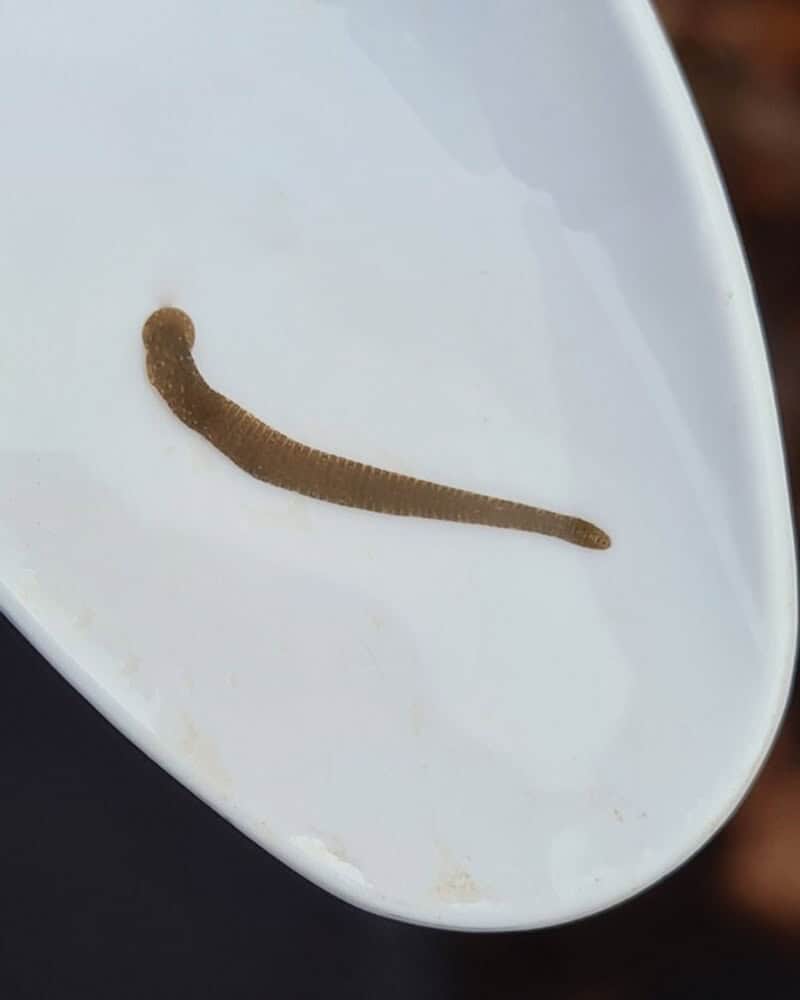
So if you’re familiar with pond dipping, then you have probably found freshwater leeches. Often leeches remain clinging to your tray once you have released everything else back to the pond. Hand searching potential habitats is also a useful collection method. Target sites include the underside of stones, the base of reeds and rushes and the wet surface of leaf litter. Your garden pond is a good place to start!
Want to learn more about leeches?
The Freshwater Leech Recording Scheme have several events lined up for 2024:
- Leeches: life history and identification. A free presentation by Craig Macadam on Youtube. Part of the EntoLive series, with the Biological Recording Company.
- Leech Field Recorder Day, with the Tanyptera Trust
4 August 2024 - Freshwater leech identification course, with COFNOD
7 September 2024, Loggerheads Country Park, Denbighshire - Leech identification workshop, with the Tanyptera Trust
8 September 2024, Liverpool - Freshwater leeches of the UK entoLEARN, with the Biological Recording Company
24 October 2024

